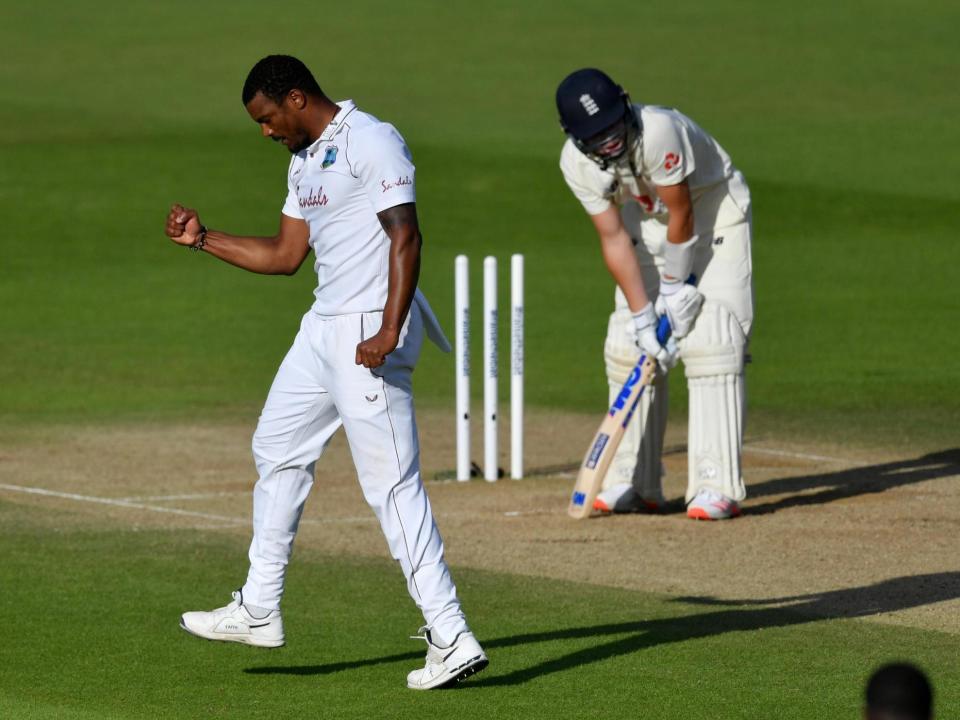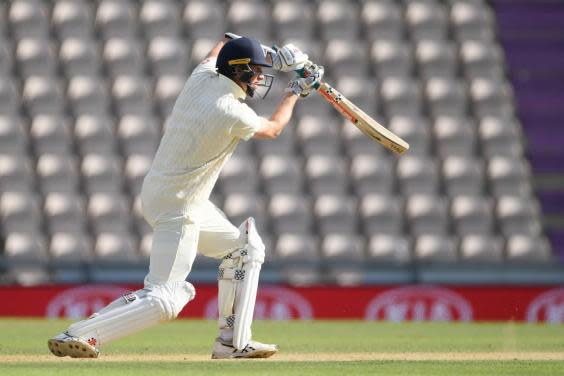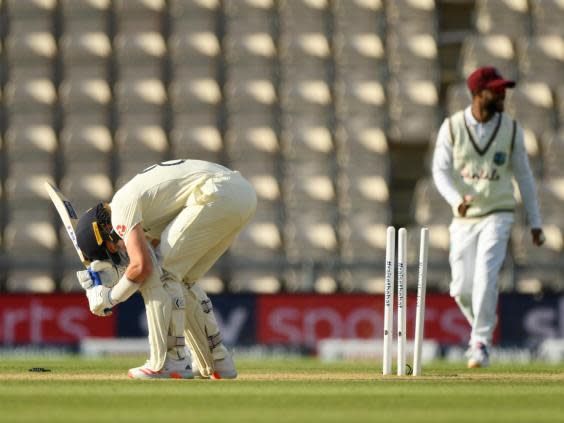England left wanting once again as West Indies seize initiative in first Test

If you were worried that Test cricket was going to be any different in a coronavirus world, never fear.
It is still as exciting as ever, teetering as this match is right now with England leading by 170 with just two wickets to go. West Indies, ever the lion-hearted bowling attack, grafted hard for the eight they managed on day four to leave England 284 for eight.
It could and should have been better for the hosts. If another of your wonders was whether this was an England side who had changed their inconsistent ways during lockdown after the series win in South Africa – you had your answer. To a batsman, they all left something out there
It’s one of cricket’s many charms that players can do well for the collective and still feel disappointment in their bones. Amateur cricketers were reacquainting themselves with that feeling on Saturday as the recreational game restarted across the country. Even the overriding emotion of being pleased to be back will have been tempered come the evening. No sport is quite so moreish.
Even as England failed to take their chances, especially when 249 for three – leading by 135 with Ben Stokes and Zak Crawley well set in a stand of 98 – some were able to do enough and yet not as much of what was required of them.
Rory Burns, for example, did his job up top, soaking up deliveries and chipping away at West Indies overnight lead of 99. The left-hander was responsible for 34 of England’s first 51 runs. Some came in his typical Turner Prize-winning style, but there were dominant flicks through midwicket, on drives and even a back cut to woo the traditional aesthete.

But a short wide one from Roston Chase which deserved to bounce off the boundary advertisement boards nestled into the hands of Alzarri Joseph at backward point. Overs had been taken our of the main bowlers and, with 72 on the board, a first-innings lead of 114 for Jason Holder’s side had been cut to 42 with nine come batsmen to come. But Burns, having done 104 balls of graft for his own 42, will rue a half-century unticked and a full one there for the taking on a pitch he had sussed from top to bottom.
Dom Sibley did one better, his second time past fifty in Test cricket taking him 161 deliveries – a strike rate only a mother and England fans who have far too often seen their middle-order exposed too early could love. And when he received the reprieve from a no ball after playing onto his stumps, he gave Shannon Gabriel the wicket he originally over-stepped for with a familiar flick down the leg side to the keeper Shane Dowrich. Similarly, what would have been a second hundred in three Tests this year was spurned. Largely, though, he had done his bit, leaving the fray with England trailing by just one But still, ruing an opportunity missed.
The personal dismay, though, will be their lot. Were it not for their foundations, England would not have made it to 284 by stumps, leading by 170 having restarted day four on 15 for no loss. Not to mention both have credit in the bank.
Burns became the first opener since Alastair Cook in 2007 to pass 1,000 Test runs, and Sibley’s 412 in his first 12 innings suggest he will be the next. Their judgements will last as long as it takes them to get over their missteps. With a Test match to win on Sunday, and the second Test starting on Thursday, it won’t be long.
That is unlikely to be the case for Joe Denly, whose 29 off 70 was as much to type as an innings can get. A score in line with his Test average and a strike rate of 41 a touch above that of his career. A straight drive and pull that hinted at class to make a first of it at this level, but more skittish variations on both followed by a tame dismissal to round it all off. His chip to Jason Holder at midwicket off Chase might be the tamest dismissal of the lot for a player who needed runs more than most.
The reason being is that Denly’s international career has been one of wanting more. From its beginnings way back when as a limited-overs batsman who did not quite do enough. And his secondary iteration as a Test cricket has followed a similar path.
There have only been six half-centuries from 28 innings, and though four of them fell within four in innings of each other, none offered him much comfort. A 94 – his top score – against Australia had plenty of caveats: the Ashes were gone and Denly was dropped on nought through a loose drive that went straight to Marcus Harris at gully.

Compounding Denly’s misery were the runs of Crawley, who seemed to be hammering a nail into his coffin with every punch to the boundary, with each press onto the front or back foot, or the fine reverse sweep to take him to a second Test fifty off 88 deliveries. The 22-year old then went past his previous best of 66, made at Johannesburg in January, and, with an eighth boundary, took England to 253 and a lead of 139.
But Crawley, too, would leave with something to lament. Alzarri Joseph, the pick of the bowlers on day four, reacted smartly to snare a return catch to see off the young Kent batsman. Indeed, that was one of five wickets to fall for just 30 as England were trimmed to 279 for eight, which was extended to 284 for no more loss by stumps.
For that reason, Denly might feel he deserves to be cut some slack. He is not the only one “lucky” to be in this XI. Serious questions should continue to be asked of Jos Buttler, too, who lost his off stump to Joseph for just nine, in absolutely the type of situation his experience of 41 Tests was required, a dismissal that now sees him average 18.36 since the start of last year’s Ashes. By extension, questions should be asked of national selector Ed Smith, the biggest advocate of both players.
Denly, though, is the most likely of the three to have participated in his last Test. Crawley’s runs and Joe Root’s return for the second Test gives a committee no need to shirk an easy and necessary change to the batting.
If it is any consolation, he might argue he has had far from a fair crack, even if 15 Tests is plenty enough. He has been asked to perform many roles, and what peace he found was short-lived because of the erratic nature of this side.
A gritty 50 at number four at Headingley last summer which made Stokes’ miracle possible was followed by a shunt up the innings to open. In that way, he may reflect that he did all that was asked of him: doing what he can as a stop-gap to cover the weaknesses of others while trying to address his. But it is also true that few batsmen have been indulged for as long as him, even if the constant scrutiny has this feeling like anything but.
Ultimately, his failings are his, as are those of the rest of a line-up who now rely on Jofra Archer and Mark Wood to somehow get them to a more competitive total. Denly is not solely the problem, just another part of it.